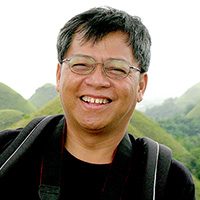SUMMARY
This is AI generated summarization, which may have errors. For context, always refer to the full article.

Today’ political circus in the national level must not distract us from the fact that the real but quiet battle is happening at the local level. As early as two years ago, the potential national candidate have been busing entering into a complex process of alliance building that involves a lot of horse-trading and mutual accommodation. They are jostling and jockeying for position to attract the attention and support of powerful political clans and strongmen whose patronage control over their constituencies can ensure the critical votes a national nominee needs to win.
This has been the case in the past, so it remains today – albeit with some major changes in the more recent years.
Decades back, electoral campaigns were won by making sure that the presidential team came from the areas where the largest number of votes can amassed. A successful team was one where one partner’s political roots were from northern and central Luzon while the other traced her family tree to the central and western Visayas and the northern-southeastern Mindanao grid.
Language also was a major factor in winning tandem. Votes from the Ilocano-Pangasinense-Pampanga and Visayan-Ilonggo speaking regions ensured sweeping victory. This linguistic coalition also enabled administration candidates to neutralize or mitigate the impact of votes coming from the Tagalog regions, especially Manila where the electorate often cast their ballots in favor of the opposition.
Hence note that in the last century, no Tagalog ever became elected president; all of them were promdi as the table below shows. Patronage, lingua franca and, most important of all, working together with local power was what won them these desired executive’s seats. This pattern was broken only when Marcos declared martial law and ruled the country with impunity for 15 years. Since then, it has never been the same.
| President/Language Group | Vice President | Term of Office |
|---|---|---|
| Manuel Roxas (Ilonggo) | Elpidio Quirino (Ilocano) | 1946-1948 |
| Elpidio Quirino (Ilocano) | Fernando Lopez (Ilonggo) | 1948-1953 |
| Ramon Magsaysay (Ilocano/Sambal) | Carlos Garcia (Boholano) | 1953-1957 |
| Carlos Garcia (Boholano)- | Diosdado Macapagal (Pampango) | 1957-1961 |
| Diosdado Macapagal (Pampango)- | Emmanuel Pelaez (Visayan) | 1961-1965 |
| Ferdinand Marcos (Ilocano) | Fernando Lopez (Ilonggo) | 1965-1969 1969-1972 |
The post-Marcos presidencies were dominated by urbanites –Manila-born or bred or educated abroad. Cory Aquino was born in Tarlac but grew up and studied in Manila (St. Scholastica’s College) and the United States (Ravenhill Academy, Notre Dame School of New York and College of Mount Saint Vincent, both in New York). She returned to Tarlac when she married Ninoy Aquino, but her mindset remained cosmopolitan.
Fidel V. Ramos was born in Lingayen, Pangasinan, but his academic pilgrimage was all-city: Centro Escolar University, United States Military Academy, and the University of Illinois. Joseph Estrada was the only antipode: Manileño through and through, with growing years spent in San Juan and Manila. Despite his Ateneo high school degree, Erap was a small town kid, whose intellectual interests never went beyond San Juan and his barkada.
All vice-presidents reached their adulthood in the city. Salvador Laurel claimed he was a blue-blooded Batangueno, but went to Paco Elementary, De La Salle, Ateneo, University of the Philippines, and Yale. Despite his claims of being an urban hick, Joseph Estrada studied in Ateneo. Gloria Arroyo was born in Pampanga, but spent the formative years of her life in Assumption (elementary, and high school), Georgetown University, then topped this with a Ph.D. from the University of the Philippines. Finally, Teofisto Guingona grew up in Cagayan de Oro and studied in a Jesuit school there, but would complete his education in the larger Ateneo de Manila University. Even the jejune Noli De Castro went to the less regarded University of the East.
It was Gloria Arroyo however that raised the bar but also brought things to a full circle with an urban cosmopolitanism that is grounded on solid localist foundations. This was the result of an itinerant life that began in Paco, and then spent her childhood in Lubao (Pampanga) and Iligan (northern Mindanao), and her teen years in Manila. In these sites, she made herself feel at home by seamlessly absorbing Visayan, Pampango, Ilocano, to add to her Tagalog and Spanish. People voted for her because of this linguistic and cultural talent.
Arroyo’s 10-year reign combined a multi-lingual knowledge of provincial goings-on with extensive back-room dealings to keep her local allies and subalterns loyal to her. It ended because of a warlord’s brutal pique, but it has given politicians who followed her clear road map to power, this despite the “accidental” presidency of Benigno Aquino III.
I suspect that Jojo Binay’s careful crafting of a national coalition that will hand him the presidency in 2016 owes much of this from this long history of local power and the recent lessons from the Arroyo years. And it is also his benightedness of these histories that will put an end to the ambitions and illusions of Mar Roxas. – Rappler.com
Patricio N. Abinales’ main research interests is politics and power in Mindanao.
Add a comment
How does this make you feel?
There are no comments yet. Add your comment to start the conversation.